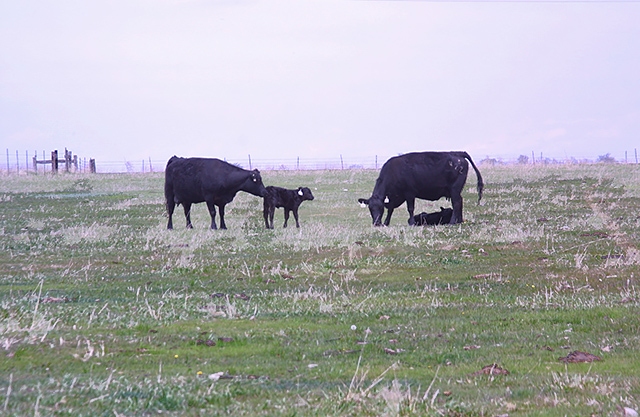Contact: Maribel Alonso
Email: [email protected]
October 26, 2021
Poor health, viruses and environmental stress can make young calves susceptible to secondary bacterial infections that cause bovine respiratory disease (BRD). These serious infections usually lead to pneumonia and treatments can be expensive.
To identify unique proteins that can be used for future interventions against this disease in cattle, scientists from the United States Department of Agriculture (USDA) and the Agricultural Research Service (ARS) took a closer look at the genetic material of several subtypes (strains). of three groups of bacterial species commonly involved in BRD.
In a study recently published in Genome, microbiologist Emily Wynn of the US Meat Animal Research Center and molecular biologist Mike Clawson examined DNA sequences of bacteria commonly found in cattle showing signs of BRD. These bacteria are called H. somni and P. multocida and M. haemolytica, which has a variable genotype (strain types). Scientists sorted the variable genopy from M. haemolytica in two types of strains (type 1 and 2).
Light reflection patterns of colonies of the two types of M. haemolytica. Types 1 and 2 are shown in pictures A and B, respectively. These images have been reproduced from Wynn EL, Schuller, G., Loy, JD, Workman, AM, McDaneld, TG and Clawson, ML, J. Micro Methods, 2020.
It is not uncommon to find all three groups of bacteria living in the upper respiratory tract of cattle without any sign of BRD, as well as communities of “good” bacteria. When the calf’s immune system is weakened by viruses or due to stress caused by environmental factors (such as weaning, transport, poor ventilation, etc.), these three bacteria (H. somni, P. multocida and type 2 M. haemolytica) multiply in the upper respiratory tract and invade the lungs where they cause disease.
But this multiplication in calves with weakened immune systems does not occur as frequently with type 1 M. haemolytica. Therefore, it was important for scientists to compare the genetic content of the three groups of pathogenic bacteria and identify the differences between the groups and the more benign type 1 strain. M. haemolytica.
Scientists focused on the differences between the proteins existing in the outer membrane of each of the bacterial groups, as these outer membrane proteins can be very important for bacterial survival or its recognition and targeting by the immune system of the host (calf).

USDA-ARS US Meat Animal Research Center. Photo courtesy of Mike Clawson
“Part of our research is aimed at using very high precision to target unique proteins, or antigens, in the outer membrane of bacteria causing BRD. These antigens induce an immune response and can protect the animal. We anticipate that these proteins can be used in future preventive measures without disturbing other “good” microorganisms coexisting in the same environment or host. Said Wynn. “One of the most exciting findings of this study was to find the outer membrane protein W, or OmpW, in all three harmful bacteria but not in type 1 M. haemolytica. We look forward to investigating this further. “
Wynn and Clawson discovered other proteins present in the outer membrane of all of these groups of bacteria, giving them additional preventive targets as well.
The teachings of this study open doors for the use of antibody recognition of outer membrane proteins to develop preventive strategies against bacteria that cause BRD. The scientists plan to expand their study to larger populations of bacteria associated with BRD and use the same approach to specifically target other pathogenic bacteria.
The Agricultural Research Service is the principal in-house scientific research organization of the United States Department of Agriculture. Daily, ARS focuses on solutions to agricultural problems affecting America. Every dollar invested in agricultural research has an economic impact of $ 17.

